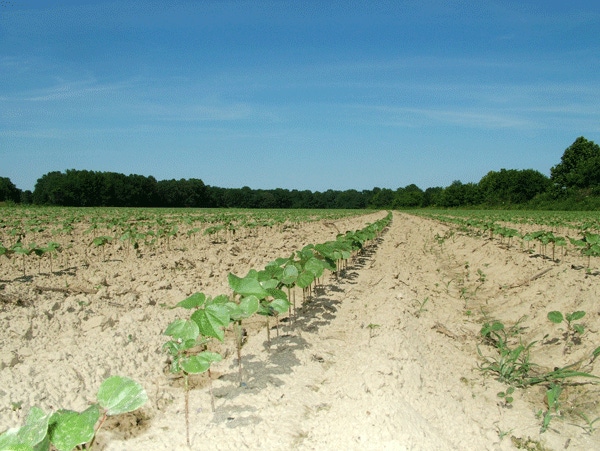
• Decisions today on which cotton variety to plant are based more on a farm-by-farm basis.• Cotton variety selection depends now on several factors, including what kind of land you’re planting on, and whether you’re planting conventional or no-till. There are a lot of different things to consider when deciding which varieties to plant.
March 23, 2011

Cotton variety selection undoubtedly has become more complex in recent years, as old favorites have been phased out and been replaced by a sometimes overwhelming number of new choices.
“We haven’t yet found replacements for the cotton varieties that we favored in earlier years, like DP 555 and DP 90,” says Dale Monks, Auburn University Extension cotton specialist. “But our varieties today, I think, have better yield potential on a one-on-one basis than what some of the older varieties. And if that wasn’t the case, then our breeders haven’t been doing their jobs. You’d hope that yield and quality have improved.”
Decisions today on which cotton variety to plant are based more on a farm-by-farm basis, says Monks. “It depends now on several factors, including what kind of land you’re planting on, and whether you’re planting conventional or no-till. There are a lot of different things to consider when deciding which varieties to plant,” he says.
Some central Alabama growers, says Monks, are still planting conventional varieties.
“We have data in our variety trials from multiple locations. Varieties are changing so fast now that the best we can get sometimes is to look at one year at multiple locations. The very worst we can do is to look at one location, somewhere close to where we farm, and make a decision based on that one location.”
Alabama cotton variety trials from throughout the state can be found at the website alabamacrops.com. “You want to look for consistency across locations, not one that’s the top in one and the bottom in another. We’re still taking a look at conventional cotton varieties, and those are included in the trials. In addition, there are some Auburn University varieties included,” says Monks.
The University of Georgia Cotton Variety Performance Evaluation Program was a huge success in 2010, with nearly 20 individual trials throughout Georgia’s cotton belt and additional trials outside the scope of the program, according to Extension specialists there.
Dedication of industry leaders
The success of the program, they say, was largely attributable to the dedication of the UGA county Extension agents, industry leaders such as Bayer CropScience, Dow AgroSciences and Monsanto Company, the Georgia Cotton Commission, and cooperating growers.
“The implementation of this program has undoubtedly helped to address a current need of Georgia cotton growers and will make an incalculable impact in the 2011 growing season and beyond,” say the specialists.
“As the 2010 season approached, it became difficult to effectively evaluate dryland variety performance due to the abnormally wet weather that was experienced throughout most of Georgia during 2009. As variety selection was drastically becoming much more important, due to the loss of DP 555 BR beyond 2010, the UGA Extension cotton agronomists decided to establish this variety testing program in 2010,” they say.
Industry leaders — Bayer CropScience, Dow AgroSciences and Monsanto Company — were asked to provide three of their commercially available cotton varieties that were their best-adapted varieties for dryland environments in Georgia. This uniform list of CORE varieties was planted in replicated trials in grower fields throughout Georgia’s cotton belt, as arranged by the county agents. Additional non-commercially available varieties (potentially future releases) were also included in a smaller set of trials.
The trials were replicated and managed/maintained by the grower with the assistance of participating county Extension agents, in order to achieve realistic and statistically sound results. A seed cotton sample of each variety was collected at harvest and ginned at the UGA Microgin to provide a more realistic value for lint percentage and fiber quality.
Additionally, the design of this program allowed for a much broader assessment of variety performance across a wide range of environments, ranging from 400 to more than 1,300 pound per-acre yield environments in 2010 alone.
This was a “first-ever” approach in that it illustrates how variety performance can change across a range of environments, which provides information on how to place varieties in environments where they will likely perform their best. The full report of the 2010 program can be on the UGA Cotton Webpage at http://www.ugacotton.com.
To assist in variety selection, the UGA Cotton Variety Performance Calculator has been updated to include all trials which have been conducted in 2009 and 2010. This calculator also can be found on the UGA Cotton Webpage http://www.ugacotton.com.
About the Author(s)
You May Also Like



